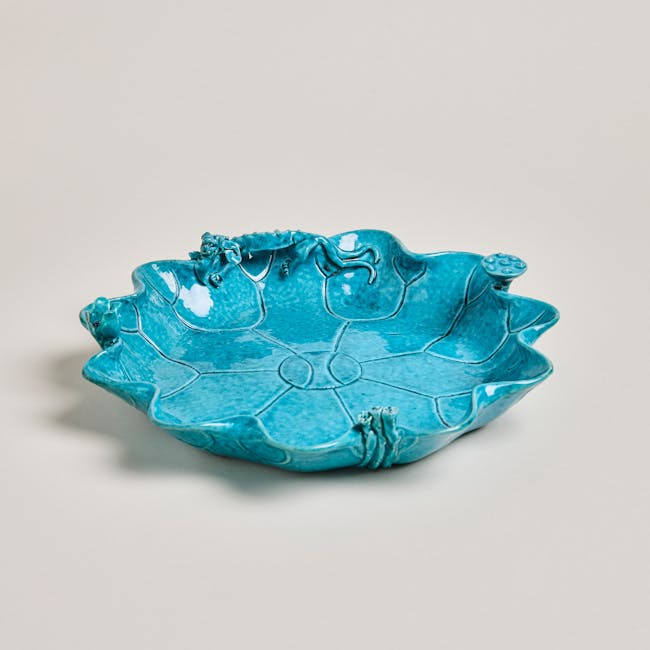This moulded water-dish in the shape of a lotus leaf, is enamelled all over on the biscuit in a rich turquoise enamel. The elegantly undulating edge of the leaf, curves up, with a small lotus bud and various seed pods along the brim. A large qilong dragon rests on the edge of the leaf. The veining on the surface is deeply incised, the turquoise glaze darker where it pools in the recesses. Correspondingly, the veining on the underside of the leaf is moulded in relief. Three thin lotus stems, also moulded in relief, meander over the underside and up the outside of the leaf - each ending with a bud or pod. The mottling in the turquoise glaze, gives the surface added depth and interest. The last owners were the Vauxelaire family, founders of Au Bon Marché department stores in Belgium, who were great patrons of the arts.
The lotus (he 荷) is a very popular motif in Chinese art. It is the flower which represents summer and the symbol of purity, as it emerges from the muddy water unstained. The various parts of the plant have different auspicious meanings. The flower (hehua) is associated with the word for harmony or peace (he 和). This allusion to harmony and purity of thought could be why this is a popular combination for scholars’ desk objects, such as this dish. Along the top edge are lotus buds in varying stages of development - perhaps alluding to growing knowledge. The qilong (hornless dragon 螭龍,) is sometimes also referred to as a water dragon, which has the same watery connotation as the lotus plant.
The Vergottis collection at l’Hermitage Museum in Lausanne, has an identical turquoise dish. A comparable dish is in the Victoria & Albert Museum, London (acc.nr. 697-1868). The Palace Collection, Beijing, has a turquoise lotus dish, but with straighter high sides and no lotus buds or qilong on the rim.






